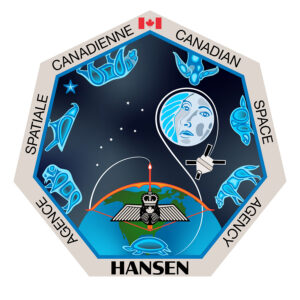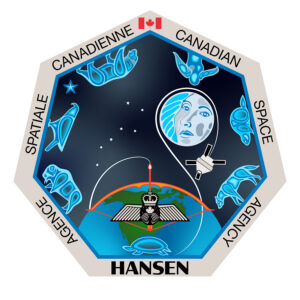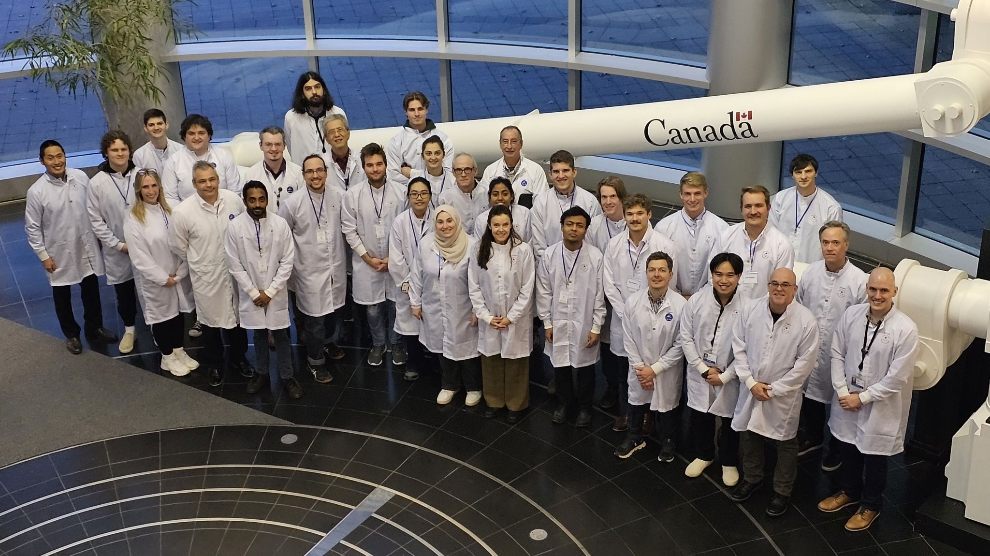When astronaut Jeremy Hansen heads to the Moon as part of the Artemis II mission he will have two mission patches, the one created by NASA for the mission and his personal patch created by the Canadian Space Agency (CSA). This past week his personal patch was unveiled and its design was influenced by Hansen’s decade long interactions with Indigenous communities.
The patch was created by Anishinaabe artist Henry Guimond with a contribution by Dave Courchene III (Sabe), Leader of the Turtle Lodge in Sagkeeng First Nation (Manitoba).
During his time as an astronaut Hansen has on many occasions visited Indigenous communities across Canada and according to the CSA, “sit with Elders and Knowledge Keepers.”
It is during these visits the CSA states that Hansen came away for an “a profound appreciation for Indigenous ways of knowing.”
The CSA further stated that “While the patch contains elements of Anishinaabe culture that do not reflect all First Nations, Inuit and Métis cultures, working with an Indigenous artist to create the patch he will wear with great humility as he represents our country in space was Jeremy’s way to recognize the importance of traditional knowledge and Indigenous Peoples of Canada.”
The CSA describes the patch as follows.
The heptagonal shape and the animals are a reference to the Seven Sacred Laws, a traditional First Nations teaching shared with Jeremy in preparation for his journey around Grandmother Moon. This teaching is but one example of many rich and selfless teachings found in the diverse cultures of Indigenous Peoples, the first explorers.
The bow represents Artemis, the twin sister of Apollo, the Greek goddess of the hunt, nature, and the Moon. Artemis launches her arrow with the astronauts, sending them around Grandmother Moon who conveys the cycle of life. It is said that she watches over the waters of Earth, regulates the tides and feeds life. The arrow launches from Turtle Island, which refers to the continent of North America in the creation stories of some Indigenous peoples.
The Royal Canadian Air Force astronaut wings are symbolic of the Canadian Armed Forces’ role in Canada’s journey to the Moon and recognize the sacrifice of Jeremy’s fellow service members and their families. The Canadian flag at the top pays tribute to the thousands of people who have worked across our country to make this mission possible, but also to symbolically bring all Canadians along on this mission around the Moon.
The Big Dipper and the North Star, easily recognizable in the night sky of the northern hemisphere, are a reminder that humanity exists amongst an unimaginably expansive universe, as the stars visible to the human eye in our night sky are limited to only those of the Milky Way, our galaxy. Starting with Indigenous peoples, explorers have used these visible stars for navigation, and astronauts continue to navigate by them in deep space. The North Star is shown as a five-pointed star to represent the five members of the Hansen family as well as Texas, where Jeremy and his family have been living since he was recruited as a CSA astronaut.
The silver border represents the Orion capsule that will support the crew on their journey. The CSA is fittingly represented within this border as well to honour the extraordinary efforts of both its past and present members to support space exploration and bring its benefits back to humanity.
Inside the silver border is a thin blue line. The blue represents the light or spirit that is in all of us – in all humankind, plants and animals. This spirit will travel with the crew aboard the capsule.




